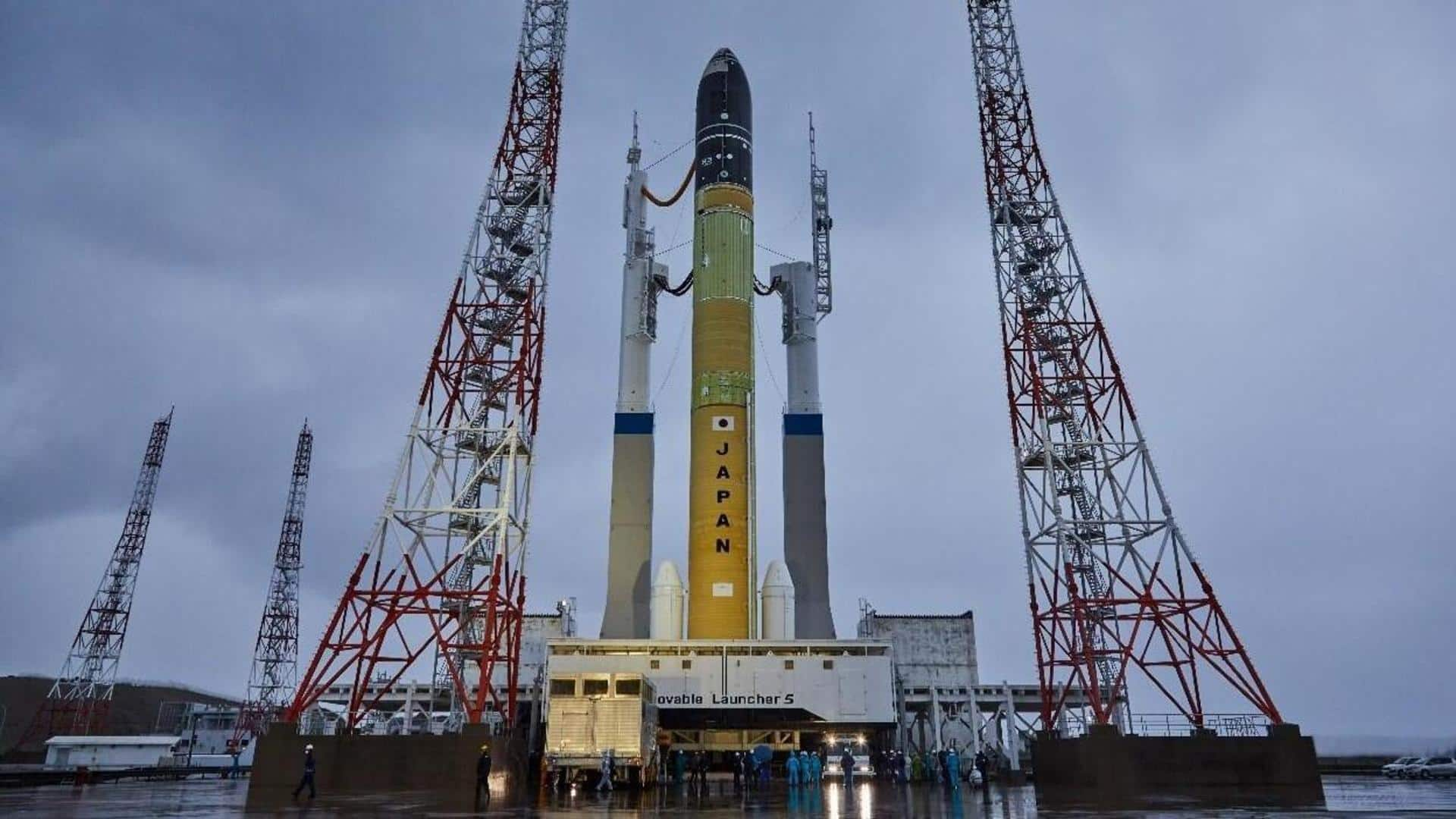
Japan's H3 rocket fails to lift off: Here's what happened
What's the story
Japan's new H3 rocket did not lift off as planned from JAXA's (Japan Aerospace Exploration Agency) Tanegashima Space Center.
One of the two solid boosters strapped to the side of the space vehicle did not ignite, leading to the termination of the first-ever launch attempt of the rocket.
The H3 was supposed to deploy an Earth-observing satellite to orbit.
Here's what happened.
Context
Why does this story matter?
JAXA and its commercial partner, Mitsubishi Heavy Industries, have spent about a decade developing the H3 rocket. The space vehicle is designed to carry government and commercial satellites into orbit and also ship supplies to the International Space Station.
The flagship rocket, which is built to be flexible and cost-effective, is soon expected to replace Japan's H-2A model.
Failure
The H3 rocket remained ground-bound
The launch countdown for the H3 rocket progressed all the way to T-0, which occurred as planned at 8:37 pm EST, February 16 (7:07 am IST, February 17).
The two LE-9 engines that power the vehicle's core stage ignited, but one of the two solid rocket boosters failed to fire up.
The 187-foot rocket remained bound to the launch pad and in one piece.
Information
Why did the booster fail to ignite?
As of now, it is unclear why the booster failed to fire up. JAXA is currently investigating the cause of the apparent engine failure. The H3 rocket was originally scheduled to take off on February 14 but the launch was delayed owing to bad weather.
Payload
ALOS-3 will regularly monitor land areas worldwide
The payload onboard the H3 rocket was the Advanced Land Observing Satellite-3 (ALOS-3), also called DAICHI-3.
The 3-ton ALOS-3, which will be positioned in the low-Earth orbit, will be able to make out features as small as 2.6 feet wide on Earth's surface, according to JAXA.
ALOS-3 will regularly monitor land areas, not only in Japan but across the globe.
Significance
ALOS-3 will aid in disaster monitoring and response
Given the unique imaging capabilities of ALOS-3, the data obtained by the satellite will have several applications, one of which will be disaster management.
ALOS-3 "will make a significant contribution to upgrading global geospatial information" and applications related to the monitoring of coastal and vegetation environments.
ALOS-3 is also equipped with an infrared sensor to detect North Korean ballistic missiles.